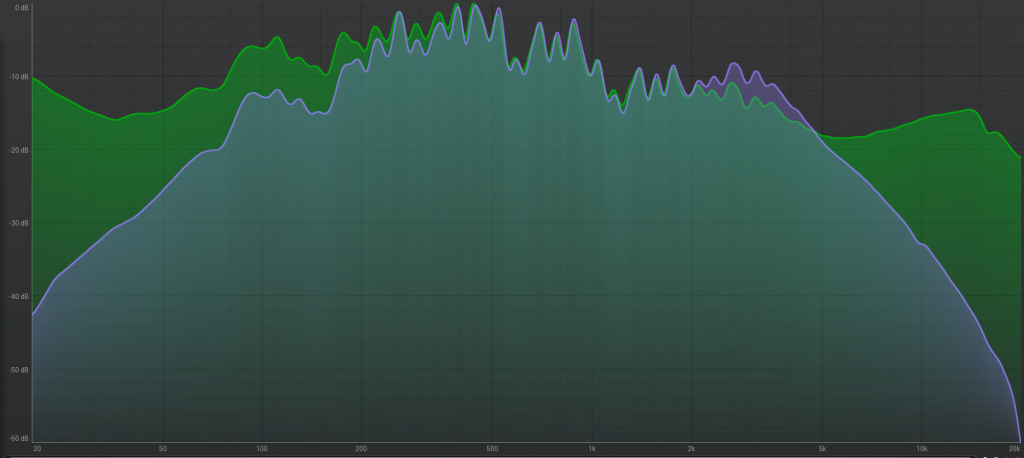As we’ve said before, there is reason to equalise tango tracks in various cases, both to improve on the sound of the older music, and to rectify faults in post-production of a lot of the music available. We have alreaydy analysed some of the scenarios and will be examining how to treat the music involved in practical situations, demonstrating the technique and examples of the results. We will be using a parametric equaliser for the demonstration, although similar results can also be attained with a graphical equaliser.
1. Canaro’s Queja indiana from 1927, TangoTunes’ edition
My first example shows a possible enhancement of an early tune, from times when both the lower and upper ranges sounded weak in comparison to the midrange. For some people this sort of equalisation adds volume to these early versions as well as some sparkle in the upper ranges.

Above is an example of the curve used to balance the TangoTunes version, with a slight intensification of tha bass, a slightly greater emphasis on the high-mids. Notice also how we shelf the deep bass and treble to reduce unwanted noise.

Here you can see the effect of the equalisation, the bass increased from 200 Hz down to 50 Hz by up to 7 dB, The high-mids by up to 8 dB from 1 Hz with t peak around 3.5 Hz.
Here are the sound samples, the first one unequalised and the second with applied equalisation. If you listen closely you can hear the increased bass and brightness in the upper ranges.
2. Carabelli’s Cantando from 1931, TangoTunes and TDJ versions
The second example is Carabelli’s Cantando from 1931. We have a couple of excellent recent transfers of this track, by TangoTunes and TDJ respectively. When we compare them we can see that the producers have made different choices in terms of how they balance the recording.

Here we have a comparison of two versions of Carabelli’s Cantando from 1931, one from TangoTunes (in grreen), the other from TDJ-AT (in blue). We can see that TangoTunes emphasises the bass quite a bit more, while TDJ increases the high-mids a little.

Hére is the curve we need to equalise the TDJ version so that it geins the same bass depth as the TangoTunes one. Here the Bass has been increased by 8dB, with the peak around 110 Hz. Notice how we use control 3 to sharpen the slope down to 200 Hz so that the effect does not go too far into the midrange.

Here we can see the effect of the TDJ version of Cantando with an emphasised bass, bringing balancing that section to approach the TangoTunes one.
Above we can hear the TDJ version of Cantando, the first unequalized and the second with the bass enhancement applied. The effect is subtle, but can most clearly be heard in the timbre of the piano parts.

Here is how we can equalise the TangoTunes version of Cantando to approximate the high-mid emphansis. As can be seen we are enancing by 3.4 dB at 3.4 Hz.

Here we see how the above adjustment sharpens the hig-mids, adding just a little sparkle to the TangoTunes version of Cantando.
Above we can hear the TangoTunes version of Cantando, first the unequalised one and then with the above curve applied. Again the change is subtle, but you should be able to hear a little bit more airyness in the higher frequencies after enhancement. Of course the application of shelving also reduces the hiss a bit as well.